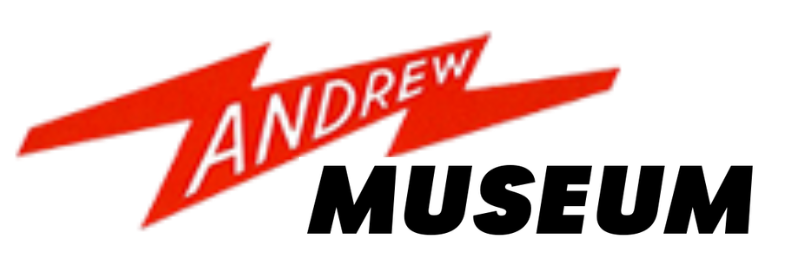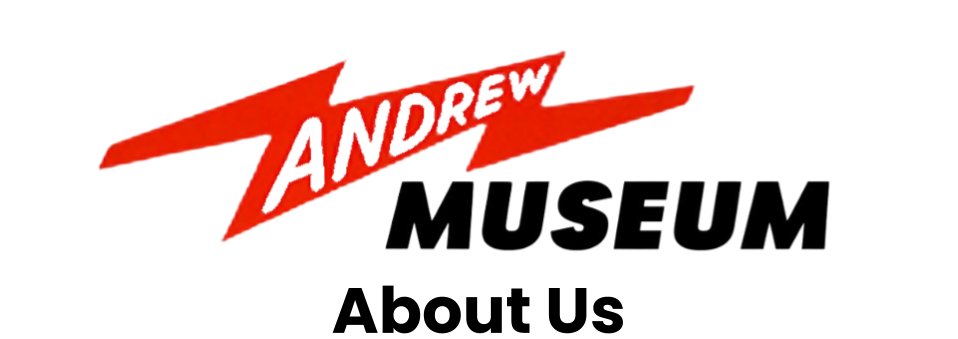
Andrew
Andrew Corporation was founded in 1937 by Victor J. Andrew and his wife Aileen out of the basement of their Chicago bungalow as an engineering consultant and manufacturer of equipment for AM radio broadcasters. While they could not have predicted the significant impact Andrew Corporation would have on the world, Victor (“Doc”) and Aileen worked hard to build their business and provide for their family in the middle of the Great Depression. Fifty years later, in 1987, the company would reach $223 million in net sales.
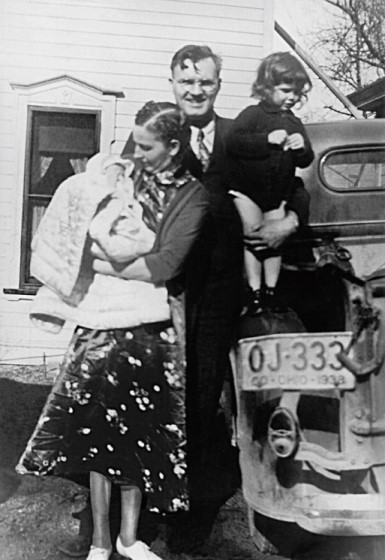
Shortly after the founding of Andrew, Japan bombed Pearl Harbor, and the U.S. was dragged into WWII. Many manufacturing facilities in the U.S., including Andrew Corporation, pivoted to assist in the war effort. The U.S. military contracted with Andrew to produce coaxial cables and dry air pumps, which were originally for coaxial cables but were used by the Air Force to pressurize airborne radiopods.
After the war, Andrew began making microwave antennas for both civilian and military communications. During the Cold War, the military again purchased many Andrew products such as switching devices, wave guides, and high-power coaxial lines that were used in military radar systems. One of Andrew’s most popular products, HELIAX, went on the market in 1953 and remained a significant revenue generator throughout the company’s existence. No matter how big the business grew, Doc made sure to stick to his original business philosophy, which was to care about the people – not only the customers but the employees as well. Most former employees attest that Andrew Corporation was an incredibly unique place to work. Doc and Aileen genuinely cared about the people, no matter how much the Company grew.
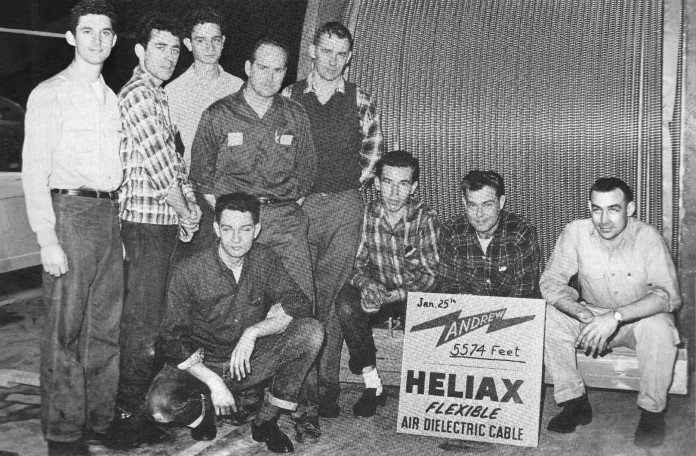
Unfortunately, Victor passed away October 30, 1971, in his Claremont, California, home. Leadership of the company was taken over by his friend and business partner, C. Russell Cox. During the 1970’s, Andrew Corporation switched from primarily being a supplier for the military to supplying private entities. To raise capital for growth, Andrew became a publicly traded company on the NASDAQ (ANDW) in 1981.
When Cox retired in 1986, Floyd English was named President and CEO of the company and Edward Andrew (Victor’s son) became Chair of the Board. English had always thought that Andrew Corporation’s markets were too narrow. As soon as the first dips in profit occurred, he began to acquire smaller businesses to expand its market. Although sales increased, earnings did not. Andrew Corporation continued expanding with acquisitions during the 1990s and early 2000’s.
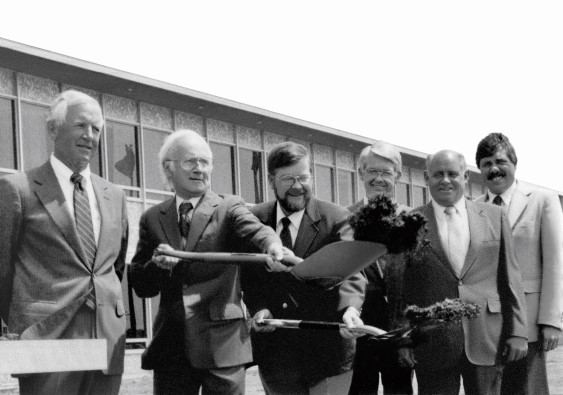
Andrew Museum / Family Foundation
After Edward Andrew and his wife Edith left Andrew Corporation in 1992, they and their adult children established the Andrew Family Foundation (“AFF”) to continue the philanthropic legacy started by Doc and Aileen in the 1940’s. The Foundation’s mission is to support projects and organizations that foster individual growth and enhance communities through education, humanitarian efforts, and the arts. AFF is still run by their children and grandchildren.
The Andrew Family Foundation has provided funding to a multitude of educational institutions including The College of Wooster, Pomona College, Lawrence University, Knox College, and Calvin College. The Foundation has offered college scholarship programs at both Carl Sandburg and Victor J. Andrew High Schools. AFF has supported a wide range of other organizations, including The Conservancy of Southwest Florida, Reading in Motion, Valley Youth Theater, Ronald McDonald House at Hope Children’s Hospital, and Discovery Children’s Museum. Most recently, the Foundation helped launch Chicago Food Rescue to help put more food in people’s stomachs and less in the landfill.
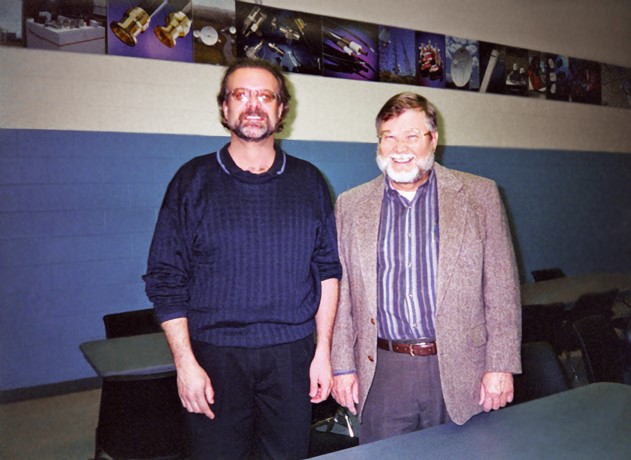
During the 2020 COVID-19 pandemic, Edward’s son, Edward (“Andy”) Andrew, Jr., started the Andrew Museum to display Andrew products, documents, pictures, historical papers, and merchandise he had accumulated over 15 years.
With its large collection of Andrew memorabilia, the museum exists to tell the story of Andrew Corporation. The museum is also a place where former employees are welcomed to gather and reminisce and even learn a bit more about the history of Andrew. Curation interns Claire Kassitas and Ella Novak helped develop the museum into what it is today.
Gallery
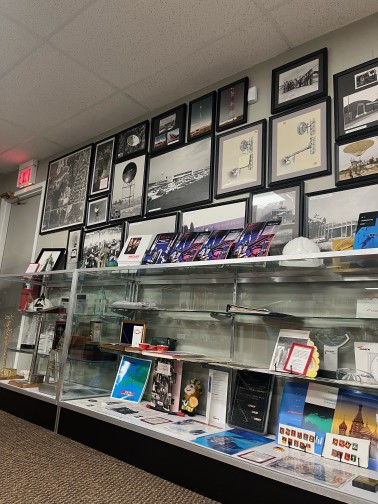
Museum Photo 1
Various photos of Andrew's history.
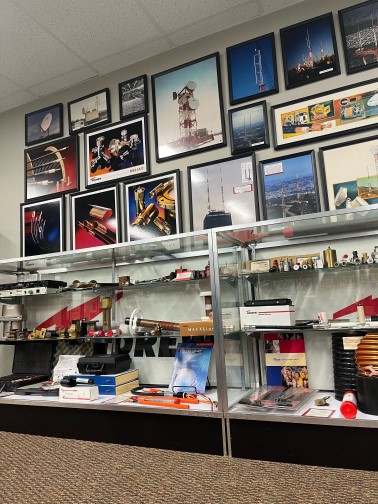
Museum Photo 2
Various Devices and Objects of Andrew's history.
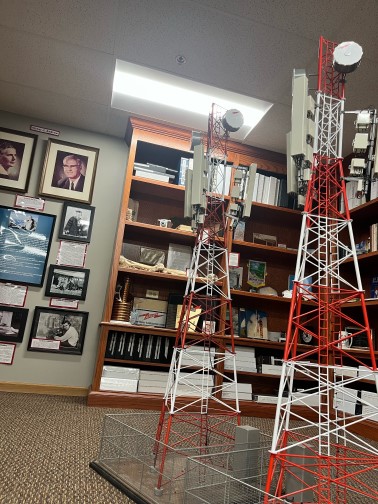
Museum Photo 3
Downscale recreation of an Andrew Antenna Site.
